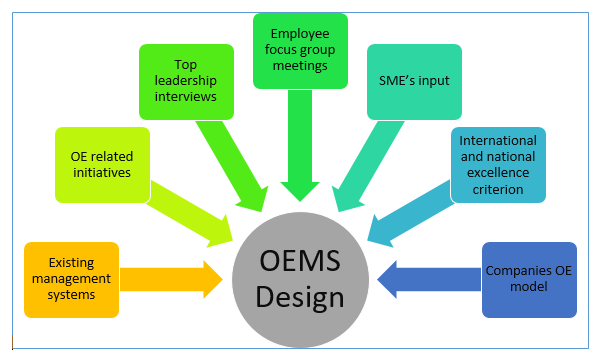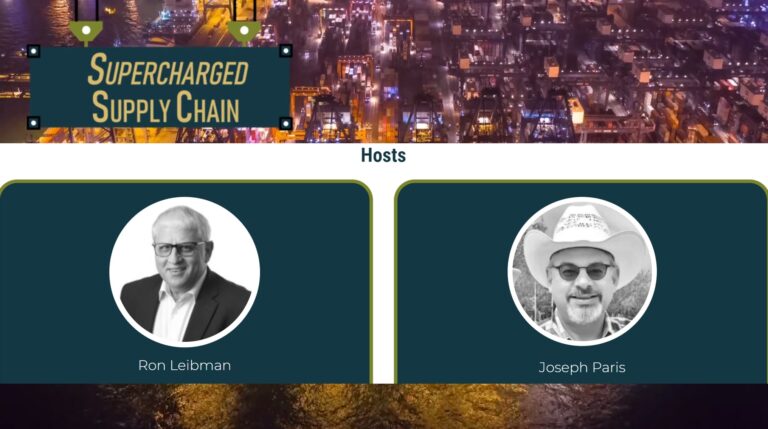ERP Optimization for Lean Excellence
Companies today must do business in a fiercely competitive global environment. In order to be a significant player in this arena, organizations must employ new technologies and techniques at a velocity that may challenge the very fiber of a company. They will be required to establish seamless integration from their customers, internally into manufacturing and out to their suppliers. In other words, the integration must wholly link all of the finite elements comprising the total supply chain.
The ability to adapt to change in the way they plan, manage and operate will set apart the winners from the losers. This will require a sharp focus on achieving excellence in all areas of the business. Company leaders will need to develop a strong bond across the value chain to achieve this high standard of excellence.
Enterprise Resource Planning (ERP) is the strategic tool that will equip the enterprise with the necessary capabilities to integrate and synchronize the isolated islands within their companies into efficient and streamlined business processes and workflows. Furthermore, world-class organizations take it one step further by linking their ERP deployment to the processes and tenets of Lean Manufacturing and Lean Supply Chain Management.
Making the decision to implement an ERP system
For a company with multiple products, complicated business requirements, and global aspirations, which is also profit-driven, there can be no other decision then to implement ERP. That ERP systems are typically associated with manufacturing organizations is not too surprising since the technology evolved from MRP and MRP II systems. However, ERP solutions are much more encompassing, being implemented in all types of organizations, including distribution centers and warehouses.
World-class distribution, as an example, requires non-traditional thinking. Your customers’ focus today has shifted from what they will buy from you to what they want you to manage for them. As a result, your emphasis also must change, from what you can sell to them to what you can remove from your customers’ processes.
Distribution companies must be able to streamline and integrate customer orders from order entry to shipping at the speed of light. They must have processes for inventory management that assure on-hand inventory in the amounts that satisfy the customer while at the same time minimizing their own internal cost. All and more of these requirements are embedded in the ERP solutions and with the proper business rules and process alignment a distribution company can achieve excellence similar to a manufacturing organization.
Practicing caution is also a necessity
While 60% of the Fortune 1000 companies already have implemented ERP systems to integrate and streamline all of their business applications, there is an element of risk involved. For example, 70% of all companies that have installed an ERP system have yet to achieve any significant return on investment, and 75% of the implementations have failed to achieve the benefits and promises associated with successful ERP.
Additionally, Problems and Application Integration Issues: An Empirical Survey, a paper written by Robert O’Keefe, and Ray Paul of Brunel University, claims that in the year 2000:
- Only 3.6% of ERP implementations were successful in terms of finishing on time, within budget and without serious technical problems.
- A majority (58%) of companies did not manage to integrate their ERP solution with existing systems.
- Some 23% of respondents said the integration procedure were unsuccessful.
- An overwhelming 71% did not attempt to incorporate their applications as integrations are “a complex, costly and a time consuming process”.
We have been compiling data on an ongoing basis for many years as to why companies fail to realize the full potential of an ERP implementation. The following seven are the most common reasons observed:
1. ERP software was installed to mirror a set of existing, often inadequate, business processes.
2. Organizations were ill-prepared to conform to “Best-in-Industry” practices.
3. Management did not take the time to answer the question, “How do we want to run the business?”
4. Pre-implementation activities were not well understood and often not done.
5. IT concentration may have been on technical wizardry and not focused on business excellence issues.
6. Education and training was rushed and did not bridge the gap from software to the day-to-day requirements of the operation.
7. Mapping of the old legacy systems to the new system was based on technology requirements, not users’ current and future needs.
Among company leaders, these findings should shift the focus away from how to avoid “simply” taking their existing processes and business rules and porting them over to the new system. Instead, they should concentrate on how to dramatically change their processes to reflect Next Generation Manufacturing and Distribution requirements.
There are only a few times in a company’s lifecycle where it gets the chance to radically change the direction of the business, update all processes, educate and train the majority of their workforce, and band together as a team all working for the success and growth of a company. Implementing an Enterprise Resource Planning System is one of them.
How to optimize your ERP system
If you have implemented ERP and you are not realizing the return that you anticipated, you should consider optimizing your ERP system. But first, a few key points when selecting the ERP system:
1. Most of the ERP systems on the market today have very mature applications. The software for the most part is robust and will have few bugs. The only caveat is if you consider purchasing a recent release of beta software. This needs to be reviewed very carefully by your team before entering into an agreement.
2. When developing your implementation budget be sure to account for user education and training. This is often short-changed to the detriment of a successful implementation and user operation.
3. One size does not fit all. Be sure to size the system with your company’s needs, capabilities and culture in mind.
4. ERP must be a joint effort. Top management involvement is a must, along with involving all the appropriate functions within the organization. Often overlooked are the suppliers during the implementation. Make sure they also are an integral part of the team.
When optimizing your ERP system, the focus must be aligning the application with your business processes and business rules to accomplish world-class manufacturing and distribution. The ERP engine needs to support your Lean efforts and must be optimized to meet Lean Manufacturing and Lean Supply Chain goals. By way of explanation for those who are unfamiliar, the Lean concept is the fundamental re-thinking and radical re-design of businesses and processes to achieve dramatic improvements in the critical performance measures of speed, cost, quality, and service.
During the ERP optimization process, provide answers to the following:
1. Is ERP helping you to improve customer satisfaction?
2. Is ERP contributing to increased market share?
3. Did ERP help decrease your operational expenses?
4. Is ERP managing and reducing/optimizing your inventory?
5. Has ERP shortened your order-to-delivery cycle time?
6. Has ERP shortened your time-to-market?
7. Has ERP helped you achieve a competitive advantage?
8. Is ERP giving you the information and metrics you need?
9. Is ERP delivering all the information in a format that allows all departments to operate in a Lean environment?
If your answer to any of these questions is “No”, then ERP Optimization should be on your critical path. The development of an optimization plan is required. This plan, however, is not a complete re-implementation of your ERP system. It is a comprehensive review and detailed study of all the features, functions and the alignment of your business systems to your current and future business processes.
A typical ERP optimization plan has the following elements:
1. Conduct in-depth interviews with all key users
2. Review all business processes from “order-to-cash”
3. Review business processes in relationship to software and best business practices
4. Review level of basic ERP knowledge in all key areas
5. Conduct detailed review of all systems parameters/order modifiers
6. Prepare detailed value maps of all key business processes
7. Prepare a departmental review of systems functionality
8. Assess systems parameters and their ability to meet business and departmental goals
9. Brainstorm policies, procedures, and business rules to support “today’s” business needs, as well as tomorrow’s
vision
10. Conduct new education and training
11. Populate ERP parameters and order modifiers in alignment with your business rules, lean thinking, and processes.
12. Document sustaining processes
There must be a relentless drive to align Lean business processes to the functionality of the ERP system. Time and effort is required for developing the optimization team, writing scope statements, educating the organization, and developing a plan that allows a company to work on very precise 90 day projects that when linked together results in excellence. The process requires an extreme attention to detail and an un-relenting desire to become a Lean Organization.
The optimization process also must focus on dramatic ERP improvements, concentrating on issues that will provide the largest return for the company. Those leaders that select to optimize their ERP system and place the information flow into perfect alignment with Lean Principles and Practices will best position themselves and their companies for ultimate success.
Summary
Companies that recognize the value of their ERP systems must be willing to make the investments of time and money required to transform their ERP system into a strategic tool that aligns the applications and business processes seamlessly. ERP is not a magic tool which will transform everything overnight. In fact, successful organizations have developed optimization efforts that over time allow them to become more agile and responsive to customer’s needs.
Companies also have to be willing to move toward new business and organizational models that will allow them to take true advantage of architectural and business changes required through the ERP application. In the end, people and applications throughout the value chain will become more flexible and agile and ready to respond to all opportunities that come their way.
ERP coupled with Lean Business processes from the Sales force to the Customer and back is the challenge. Develop your goals and objectives for implementing ERP and then put together a plan that will accomplish both your short and long term strategic and tactical goals. This will take a tremendous attention to detail, the willingness to change, and the courage to persist until you have reach your final objective. The opportunity is yours.
By Dan Marino
Dan Marino is a Senior Partner of Marino Associates, LLC; Mr. Marino has more than twenty-five years in materials and manufacturing with experience in ERP, Lean/Agile Manufacturing process JIT, MRP II, Capacity Planning, Supply Chain Management, and Global Procurement. Dan has a degree in Business Management and Industrial Engineering. He is a Certified Instructor for Boston University in their Lean Certification program and certified Six Sigma Green Belt. Dan is a frequent speaker and educator on the local, national and international level.
Contact him at danam333@aol.com.






